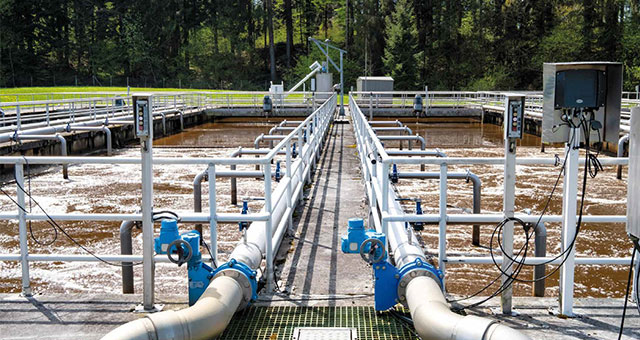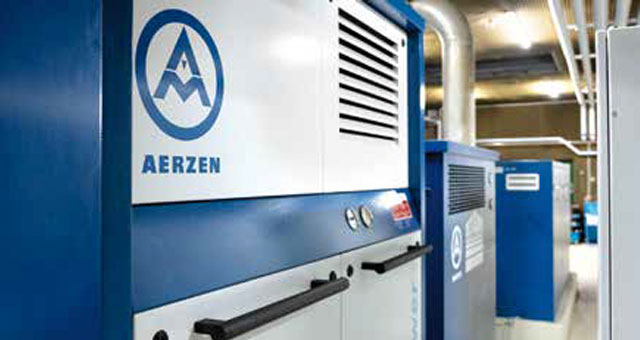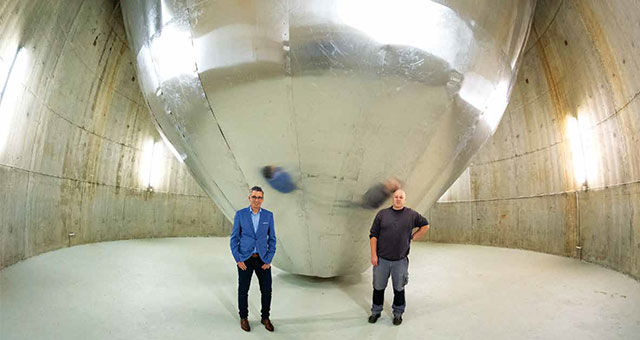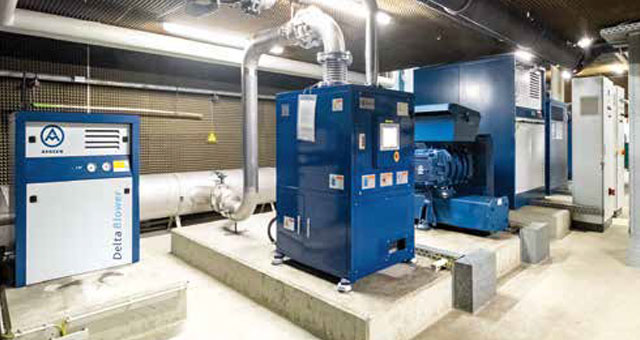Thanks to a fourth treatment stage, the Isny wastewater treatment plant achieves a phosphate content of 0.1 milligrams per litre, and is thus two thirds below the permitted limit value on an annual average. Very good wastewater treatment is necessary in southern Germany. The 50,000 PE plant discharges the purified water via the ‘Untere Argen’ river directly into a drinking water reservoir, called Lake Constance. Blower technology, made by AERZEN, takes over important processes in the fourth cleaning stage, the activator basins and other cleaning areas.
- Article Phosphate-free into Lake Constance
Isny wastewater treatment plant cleans in four stages with blower technology made by AERZEN
It is a full state treaty, which has regulated things in the border region between Baden-Württemberg and Bavaria since 1986. The signatures of Lothar Späth and Franz-Josef Strauß are still today a visible sign for a clean sweep. After all, the two prime ministers laid the foundations for the Isny wastewater treatment plant, and thus also for economic and state-of-the-art wastewater technology across two national borders. The catchment area of the wastewater association Isny-Weitnau in the Allgäu region measures 160 square kilometres. “About two thirds of our wastewater come from the municipality of Isny, with the remainder coming from the Bavarian municipality of Weitnau. Accordingly, the investments are also distributed according to the causation principle,” says Ulrich Schneider, Wastewater Master.
Strict requirements due to proximity to Lake Constance
Another special feature of Isny is its immediate proximity to the Lake Constance drinking water reservoir, with correspondingly low discharge limits. The company managed by Schneider achieves an annual average COD value of 12 milligrams per litre. The nitrogen content is 7 milligrams. For phosphorus it is 0.12 milligrams at the outlet to the receiving water. In the fourth treatment stage, the wastewater is treated with trivalent iron salt to precipitate the dissolved phosphate. This reaction produces flakes of poorly soluble iron phosphate (FePO4), which can be eliminated with a two-stage filter, made of quartz sand and anthracite. Depending on the freight volume, the filter must be flushed with a water-air combination at least every 24 hours. The wastewater treatment plant uses for cleaning two older positive displacement blowers of AERZEN type Delta Blower. The two assemblies supply air into the basin by means of the filter cartridges at the bottom of the sand filter and, together with the pumped water, swirl the filter material with the iron phosphate enriched in it. Due to the different specific weight of quartz sand and anthracite, both filter materials are sorted again exactly in their specified layer after rinsing. The iron phosphate rinsed out leaves the basin via a drain and is returned to the wastewater treatment plant.“Ultimately, we enrich the sewage sludge with it,” explains Ulrich Schneider.
The sewage sludge must be dried before it can go into combustion. The heat required for this procedure can be obtained from modern wastewater treatment plants, with technology already available today from the company’s own treatment process. AERZEN now offers system solutions for effectively recovering the heat inevitably generated by compressed air with tube bundle heat exchangers. Thermal energyis already used in many wastewater treatment plants for heating the operating buildings, including hot water preparation. With a view to sewage sludge recycling, thermal energy will play an even greater role in the drying procedure in future.
Self-sufficient energy supply
Wastewater Master Ulrich Schneider and Markus Leidinger, Sector Manager at AERZEN, agree that self-generated energy supply of wastewater treatment plants will continue to gain further importance in the future. For good reason, a photovoltaic system is installed on the roof of Isny, generating green electricity together with the block-type thermal power station. Amongst others, the heat from the block-type thermal power station goes into the digestion tower and creates optimum fermentation temperatures. With a view to achieving the best possible energy efficiency right from the start, Isny also uses a combination of turbo blowers and positive displacement blowers for aeration of the activator basins. AERZEN turbo blower, type AT 50-0.6 S with 40 kW motor rating, delivers a volume flow of up to 35 standard cubic metres per minute. The compact, speed-controlled machine is thus able to cover the base load range of the wastewater treatment plant completely, with high energy efficiency. For operating conditions below this level, this turbo blower is automatically disconnected from the mains, and a Delta Blower, positive displacement blower, type GM25 S (maximum volumeflow 20 m³/min with 30 kW) takes over the work. At peak loads, the two assemblies form a compound operation. The interaction of different blower technologies is called AERZEN Performance³. The bespoke system takes into account every type of machine and its special technical features, in order to be able to regulate the sometimes fluctuating pollutants with maximum energy efficiency.
Résumé
The wastewater treatment sector is currently facing a number of challenges. These are the topics: energy efficiency, phosphate recovery and the purification of water from plastic compounds. In addition, solutions must be found to effectively reduce the excreted drug residues of painkillers and the contraceptive pill, e.g. by means of ozone systems. “There are also initial analytical results, which show that food additives, such as the sweetener aspartame, are present in water - with unknown consequences,” reports Schneider.



